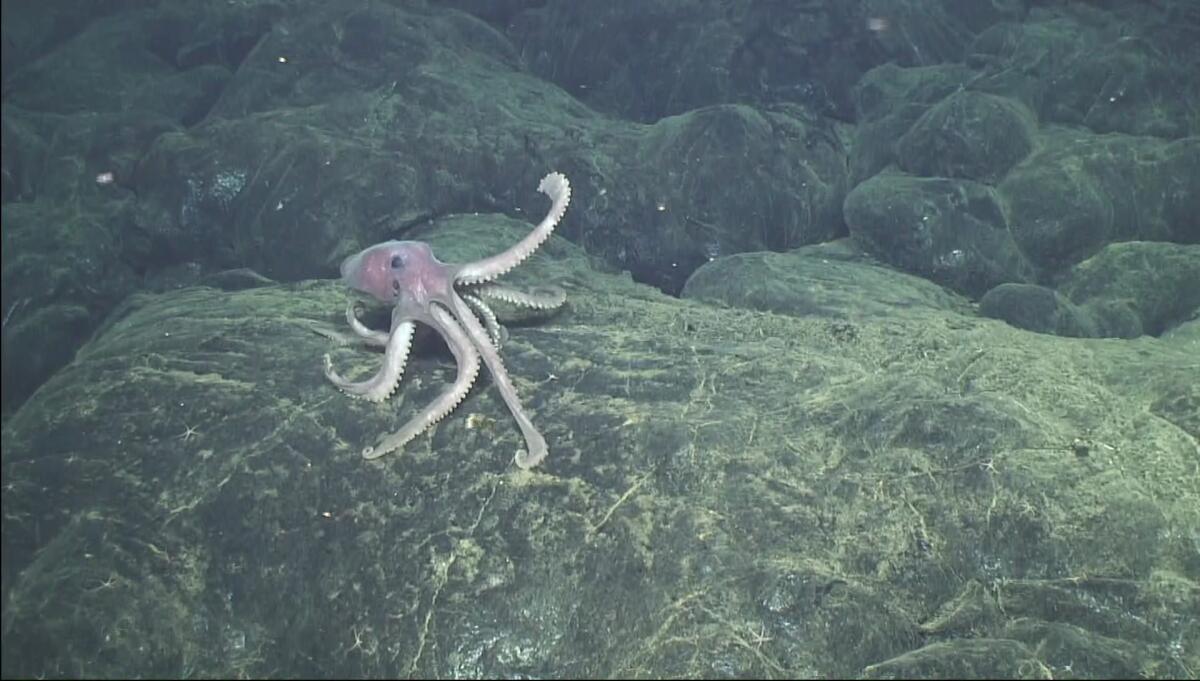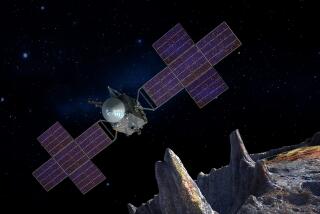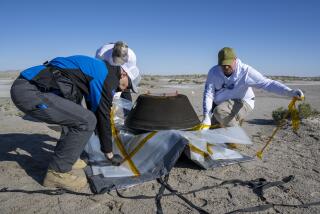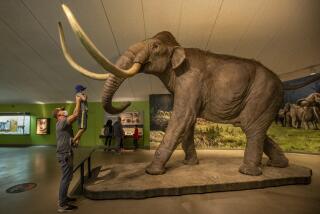That dinosaur-killing asteroid also triggered massive magma releases beneath the ocean, study finds
The asteroid that hit Earth 66 million years ago appears to have caused huge amounts of magma to spew out of the bottom of the ocean, a new study of seafloor data finds.
The discovery, described in the journal Science Advances, adds to the portrait of an extinction event that was as complex as it was deadly.
For decades, researchers have pointed to a cataclysmic asteroid smashing into the planet as the reason the dinosaurs, and many other species of life on Earth, were wiped out during what’s formally known as the Cretaceous-Paleogene extinction event (named for the periods that came before and followed after it). That impact, which scientists think left the roughly 110-mile-wide Chicxulub crater in the Gulf of Mexico, would have vaporized living things nearby and sent choking clouds of debris into the air, obscuring the sun.
But scientists have also pointed to another culprit: the Deccan Traps in present-day India, one of the largest volcanic provinces in the world, which just happened to be going gangbusters at the time of the extinction event. The ash and noxious gases from the Deccan Traps are really what killed the dinosaurs, some scientists say, downplaying the asteroid’s role.
“People still argue about which one was actually the primary driver of environmental changes that resulted in the death of dinosaurs,” said senior author Leif Karlstrom, an earth scientist at the University of Oregon in Eugene.
Researchers have also suggested that perhaps the two were connected — perhaps the asteroid triggered Deccan Trap volcanism, producing a brutal one-two punch that ultimately knocked out roughly three-quarters of the Earth’s plant and animal species. But recent work has shown that the traps started spewing roughly a quarter-million years before the asteroid hit, Karlstrom said.

Still, scientists have wondered if there might indeed be some kind of connection between the two. And lead author Joseph Byrnes, a geophysicist at the University of Minnesota in Minneapolis, realized something: If the asteroid impact had had a major impact on volcanism at the time, that effect should have shown up in the activity along the Earth’s mid-ocean ridges. So he and Karlstrom went looking for it.
The mid-ocean ridges are long cracks in the Earth’s crust at the bottom of the ocean floor where tectonic plates meet. As the plates pull apart, hot magma rises up between them, flowing out on either side of the crack before cooling, creating new seafloor in the process. With more than 40,000 miles of ridges, this network of cracks forms the longest mountain chain on Earth.

An animated summary of a new study that says a massive eruption of undersea magma helped seal the fate of the dinosaurs. (Credit: Carla Schaffer/AAAS)
The youngest rock is always right at the ridge (where fresh magma keeps producing new rock) and gets older the farther away it is from the ridge on either side. And scientists can date the age accurately thanks to the Earth’s magnetic field, which reverses itself every so often, as it has throughout the planet’s history. That magnetic polarity gets locked into a newly formed rock as it cools and solidifies. By tracking the sequence of polarity flips in the rock near these ridges, researchers are able to tell how old a given section of the seafloor must be.
The two scientists used this data compiled by other researchers and combined it with another data set showing the gravitational field of the surface beneath the ocean. The stronger the gravitational field in a given spot, the more mass there is. (It’s a substitute for actually being able to see the surface topography of the ocean floor, much of which still remains a mystery, the researchers pointed out.)
“We have a topographic map of the Earth’s surface and we have topographic maps of Mars and Venus, but we don’t have that for the ocean floor,” Byrnes said. “We have it for places where people have taken ships, but it would take something like 900 years to survey the whole ocean floor. It’s just too resource-intensive — so we have to use the gravitational anomalies as a proxy.”
Sure enough, the scientists found that at the time the asteroid hit the Earth, there was a sudden surge in the magma pouring out of these mid-ocean ridges, which put out on the order of a hundred thousand to a million cubic kilometers of volcanic material. That’s not too far behind the estimated several million cubic kilometers or so of magma produced by the Deccan Traps.
It’s possible that the powerful seismic waves produced by the impact triggered the release of reservoirs of magma beneath the surface, Karlstrom said. And if it affected the mid-ocean ridges this way, it could have played a similar role in the Deccan Traps, triggering even more volcanism than before.
The mid-ocean ridges, then, could be a bellwether for a similar phenomenon occurring in the already-active Deccan Traps.
But did that marine magma release do any damage of its own? While it’s unclear whether this extra load of ocean floor magma worsened the extinction event, it could potentially have played a role by further acidifying the oceans. Previous work indicates that marine species that were more sensitive to ocean acidification were worse hit by the extinction event. But probing that possibility will take more research, the scientists added.
“That’s what we need to work on next, I would say: trying to tease out what the effects on the environment were of the volcanic activity,” Byrnes said.
Follow @aminawrite on Twitter for more science news and “like” Los Angeles Times Science & Health on Facebook.
MORE IN SCIENCE
Humanity will need to make some drastic changes if it wants to keep the ‘good life’ going
Galaxies that move together have cosmologists stumped about dark matter
Blast from the past: How Explorer 1, America’s first satellite, launched the space race and NASA







